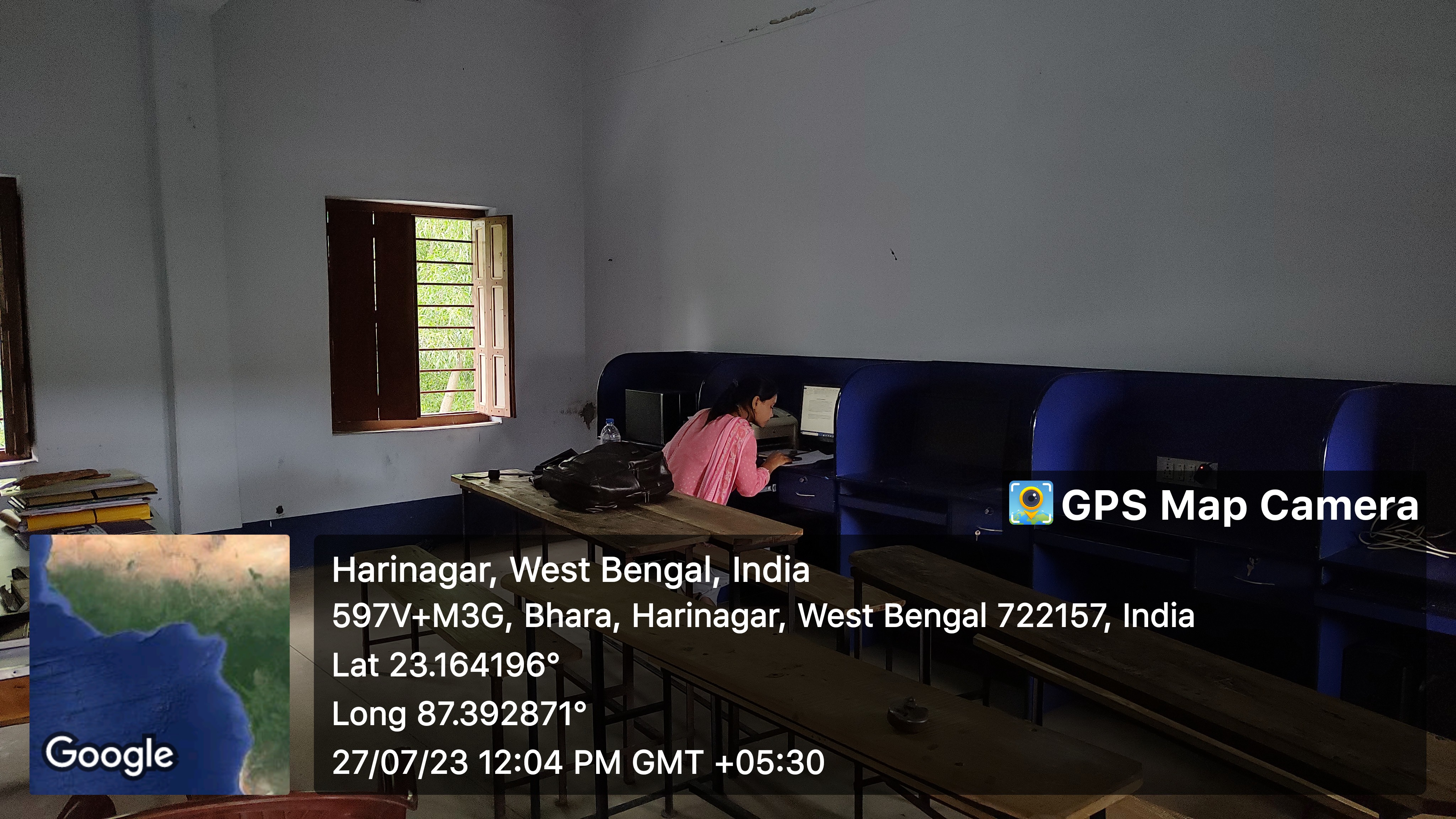

Computer Laboratory

In the heart of our college campus stands a remarkable structure known as the computer laboratory. This haven of technology serves not only as a hub for academic exploration but also as a bridge connecting the realms of learning and administrative functionality. The laboratory plays an essential role, acting as a cornerstone for disseminating knowledge and facilitating diverse tasks. Its establishment in the year 2018 was in accordance with the guidelines of the Choice Based Credit System (CBCS) syllabus, marking a contemporary path for educational progression. The computer laboratory holds the status of an invaluable asset, particularly due to its pivotal role in educating students about the intricate aspects of Geographic Information Systems (GIS) software and the multifaceted functionalities of Microsoft Excel. Among the software tools are QGIS (version 3.18) and DNRGPS, which are integral components of the curriculum. This fusion of technology and education is most prominent during the 3rd, 4th, and 5th semesters of the Geography curriculum, under the umbrella of CBCS. Apart from this The lab offers Wi-Fi, aiding students in swiftly accessing information for projects and studies, enhancing their learning experience. During this time, the laboratory transforms into a crucible of experiential learning, equipping students with skills to utilize the power of GIS for spatial analysis. Additionally, students delve into the functions of Excel, unravelling its capabilities for data manipulation and analysis. By integrating these technological tools into the academic curriculum, the laboratory becomes a trailblazer in equipping students with practical competencies aligned with the data-centric demands of the modern world. Within the laboratory's walls, four computer systems stand as sentinels, each serving as a portal to knowledge and exploration. This collective symphony of computation, carried out with a student-centric ethos, cultivates an environment where groups of 3 to 4 students collaborate around each terminal. Collaboration is a cornerstone of comprehensive learning, as students pool insights, navigate software intricacies, and develop profound understandings through shared inquiry. The laboratory's significance goes beyond its role in education. It also serves as a versatile space for National Assessment and Accreditation Council (NAAC)-related activities. This multifaceted utility underscores the institution's commitment to quality validation and continual improvement, critical elements for achieving educational excellence. Moreover, the laboratory extends its functions to accommodate the needs of other departments and the administrative sections of the college, highlighting its holistic role as a facilitator of diverse objectives. With each passing semester, the computer laboratory remains an unwavering symbol of progress, innovation, and the tireless pursuit of knowledge. The lab provides students with access to essential technology and software relevant to their field of study. This hands-on experience helps them gain practical skills that are valuable in the real world. The lab also encourages collaborative learning, where students can work together on projects and solve problems collectively.. It's also a space for administrative tasks, quality checks, and NAAC-related activities, showcasing the department's commitment to excellence. Overall, a computer lab enhances the learning experience, empowers students with technological proficiency, and supports various academic and administrative functions.